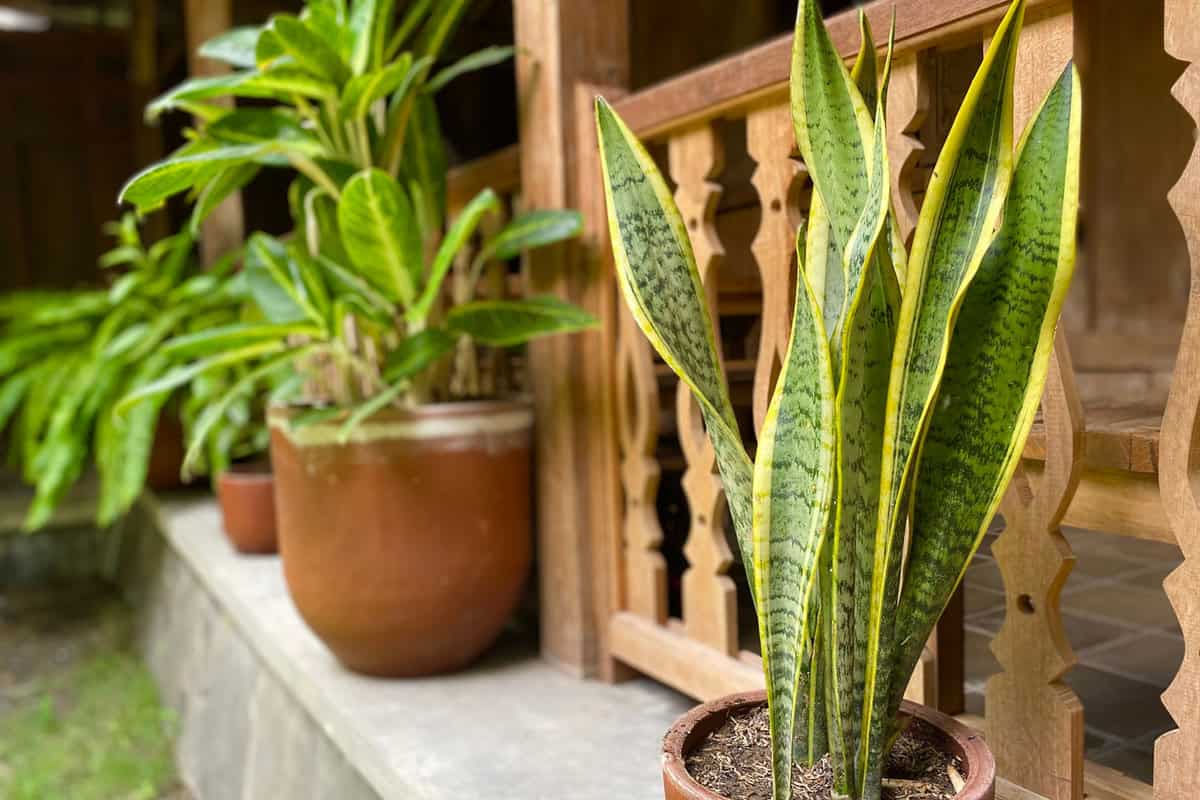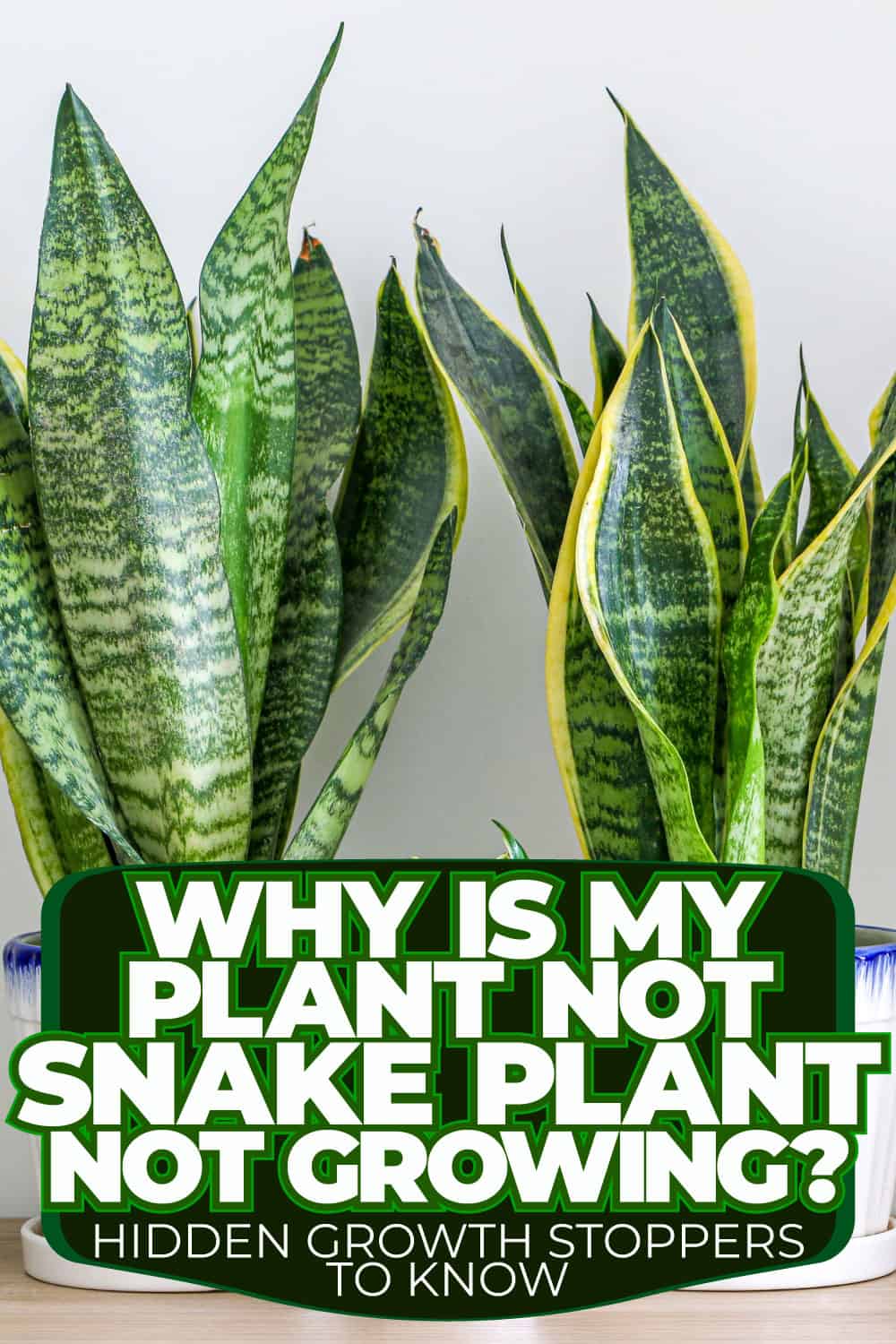Are you struggling to get your snake plant to grow? A snake plant is known for being a hardy and low-maintenance houseplant, but sometimes, it can be tricky to get it to thrive.

If you're wondering why your snake plant isn't growing, there could be several reasons.
One common reason snake plants don't grow is a lack of essential conditions. This can include factors such as light, water, or nutrients. Without these elements, your snake plant may struggle to grow and thrive.
Additionally, stress caused by issues such as pests, disease, or temperature can also cause your snake plant to stop growing.
If you're experiencing any of these issues, don't worry - there are easy fixes that can help get your snake plant back on track!
Understanding Your Snake Plant
If you're wondering why your snake plant is not growing, it's essential first to understand this popular houseplant's characteristics and growth cycle. Here are some key things to know:
Characteristics of Snake Plants
Snake plants, also known as Sansevieria, are succulent native to tropical Africa. They are known for their long, upright leaves that grow in a rosette pattern and can reach up to several feet in height.
Some snake plant varieties have variegated leaves, while others have solid green leaves.
One of the unique characteristics of snake plants is their ability to tolerate low-light conditions. This makes them a popular choice for indoor spaces that don't receive a lot of natural light.
Additionally, snake plants are known for their air-purifying qualities, as they can remove toxins such as benzene, formaldehyde, and trichloroethylene from the air.
Growth Cycle of Snake Plants
Snake plants have a relatively slow growth rate, especially compared to other houseplants. They typically grow 2-3 new leaves per year, and it can take several years for them to reach their full height.
Snake plants also have a natural growth cycle that can affect their growth rate. During the spring and summer months, when temperatures are warmer and days are longer, snake plants are in their active growth phase.
This is when they will produce new leaves and may require more water and fertilizer. In contrast, snake plants enter a dormant phase during the fall and winter.
During this time, they may not produce new growth and require less water and fertilizer. Adjusting your care routine based on your snake plant's season and growth cycle is essential.
Common Reasons Why Snake Plants Don't Grow
If you've noticed that your snake plant isn't growing as it should, it could be due to several reasons. Here are some standard growth stoppers you should know about:
Insufficient Light
If your plant isn't getting enough light, it may not grow as fast or tall as possible.
Snake plants should be placed in bright, indirect light for several hours daily. If you're keeping your plant in a dark corner, consider moving it to a brighter location or supplementing it with artificial light.
Inadequate Watering
Overwatering is a common mistake that can lead to root rot and stunted growth in snake plants. On the other hand, not watering your plant enough can also cause it to stop growing.
Snake plants prefer well-draining soil and should be watered only when the top inch of soil is dry. Given this nature, misting a snake plant's leaves is generally not recommended.
Misting the snake plant's leaves can cause them to become overwatered, leading to several other health issues. Their leaves are accustomed to staying dry, as they derive moisture from the humidity within their environment.
Wrong Temperature
Snake plants are hardy and can tolerate a wide range of temperatures. However, they prefer temperatures between 70-90°F.
If your plant is exposed to temperatures outside this range for extended periods, it may stop growing.
Avoid placing your snake plant near drafty windows or air conditioning units, and keep it away from cold drafts during the winter months.
How Soil Affects Snake Plant Growth
The soil might be the culprit if your snake plant is not growing. Here are some ways that soil can affect the growth of your snake plant.
Types of Soil
Snake plants prefer well-draining soil that is not too dense. If the soil is too compact, the roots can't grow properly, and the plant won't be able to absorb nutrients and water effectively.
On the other hand, if the soil is too loose, it won't hold enough water, and the plant will dry out too quickly.
The ideal soil for snake plants is a well-draining mix of potting soil, perlite, and sand.
You can also add peat moss or coconut coir to help retain moisture. Avoid using heavy garden or clay soil, as they hold too much water and can cause root rot.
Drainage Problems
Another way that soil can affect snake plant growth is through drainage problems.
The roots can become waterlogged and rot if the soil doesn't drain well. This can cause stunted growth, yellowing leaves, and even plant death.
Ensure your snake plant is in a pot with drainage holes to ensure good drainage. You can also add a layer of rocks or gravel to the bottom of the pot to help water drain away from the roots.
Finally, be careful not to overwater your snake plant, as this can also lead to drainage problems.
Nutrient Deficiencies and Snake Plant Growth
If your snake plant is not growing, one possible cause could be a lack of essential nutrients.
Nutrient deficiencies can cause many problems, including stunted growth, yellowing leaves, and even plant death. Here are a few common nutrient deficiencies that can affect snake plant growth:
Lack of Nitrogen
Nitrogen is an essential nutrient for plant growth; a lack of nitrogen can cause your snake plant to stop growing. Symptoms of nitrogen deficiency include yellowing leaves, stunted growth, and weak stems.
If you suspect your snake plant is suffering from a lack of nitrogen, you can try adding a nitrogen-rich fertilizer to the soil. Alternatively, compost or organic matter can improve soil quality and increase nitrogen levels.
Insufficient Potassium
Potassium is another essential nutrient for plant growth, and a lack of potassium can cause your snake plant to stop growing.
Symptoms of potassium deficiency include yellowing leaves, weak stems, and poor root development.
If your snake plant needs more potassium, use a potassium-rich fertilizer or enhance soil potassium levels with wood ash or banana peels.
Pests and Diseases That Hinder Snake Plant Growth
If you've noticed that your snake plant has stopped growing, it could be due to pests or diseases. Here are some common pests and fungal diseases that can hinder snake plant growth:
Common Pests
Spider Mites
These tiny pests can be hard to spot, but they can cause significant damage to your snake plant.
They feed on the plant's sap, which can cause the leaves to turn yellow or brown and eventually fall off.. Look for tiny webs or small dots on the leaves.
Aphids
These small, soft-bodied insects can suck the sap out of your snake plant, causing it to wilt and lose its vigor.
They can also transmit viruses that can cause further damage to the plant. Look for small, green, or black insect clusters on the leaves or stems.
Mealybugs
These white, cottony pests can be found on your snake plant's leaves, stems, and roots. They feed on the sap, causing the leaves to turn yellow and fall off. They can also attract ants and other insects to the plant.
Fungal Diseases
Root Rot
Overwatering your snake plant can lead to root rot caused by a fungus that attacks the plant's roots. The roots will turn brown and mushy, and the plant may start to wilt and lose its leaves.
To prevent root rot, ensure your snake plant is planted in well-draining soil and allow the soil to dry out between waterings.
Southern Blight
This fungal disease can cause the leaves and stems of your snake plant to rot and turn brown. It's caused by a fungus that thrives in warm, humid conditions.
To prevent Southern blight, ensure your snake plant is planted in well-draining soil and avoid overwatering it.
Reviving Your Stunted Snake Plant
If you notice that your snake plant is not growing as it should, there are a few things you can do to revive it. Here are some tips to help you get your snake plant back on track.
Repotting Tips
One of the reasons why your snake plant may not be growing is because it has outgrown its pot.
If the roots are overcrowded, they won't have enough space to grow and expand. Repotting your snake plant can help it get the space it needs to grow.
When repotting your snake plant, make sure to use a pot that is one size larger than the current one. Choose a well-draining potting mix and add perlite or sand to improve drainage.
Gently remove the plant from its current pot and loosen the roots before placing it in the new pot. Water the plant thoroughly after repotting and avoid fertilizing for a few weeks to give it time to adjust.
Proper Watering Techniques
Overwatering or underwatering can both cause stunted growth in your snake plant. Ensure to water your plant only when the top inch of soil is dry. Avoid letting the plant sit in standing water, which can cause root rot.
Stick your finger in the soil to check if your snake plant needs watering. If it feels dry, it's time to water.
If it feels moist, wait a few more days before watering. Remember, snake plants are drought-tolerant and can go several weeks without water.
Ideal Light Conditions
Snake plants thrive in bright, indirect light. If your plant is not getting enough light, it may not grow as quickly as it should. Move your plant to a brighter location, but avoid direct sunlight, which can burn the leaves.
If your snake plant gets too much light, it may develop brown spots, or its leaves may curl. Move it to a location with less light, or use a sheer curtain to filter it.


That information on the snake plant was very helpful, thank you. My plant is very healthy. But I will get some plant food soon